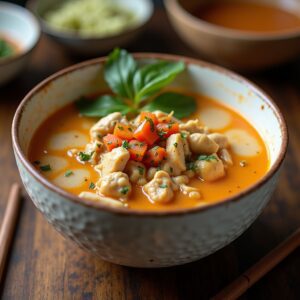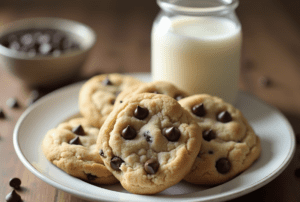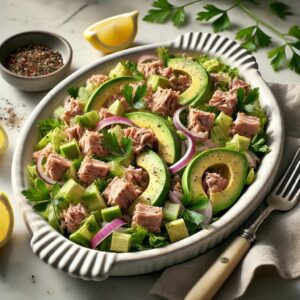

100 Foods That Last 10 Years (or More): Long Shelf Life Staples for Smart Storage and Food Security


Arya Soleil
In a world where uncertainty is the new normal, having a well-stocked pantry isn’t just practical—it’s empowering. Whether you’re preparing for emergencies, reducing grocery trips, cutting down on food waste, or simply looking to simplify your life, investing in long-lasting food staples can save you time, money, and stress. Surprisingly, many common kitchen ingredients—if stored correctly—can last a decade or longer without spoiling or losing their nutritional value. From dried beans to raw honey, these foods are naturally shelf-stable, budget-friendly, and nutrient-rich
Let’s explore 100 of the top foods that last up to 10 years or more, why they’re worth stocking, and how to store them properly for long-term use. Below is a deep dive into the key items featured in the graphic and why they should have a permanent place in your pantry or preparedness kit
Raw Honey: The Eternal Sweetener
Raw honey is one of the few foods on Earth that never spoils. Thanks to its low moisture content, natural acidity, and antibacterial compounds, honey has been found intact in ancient Egyptian tombs—still edible after thousands of years. It also has medicinal properties, supporting immune health, wound healing, and soothing sore throats
Storage tip: Store honey in a tightly sealed glass jar in a cool, dark place. If it crystallizes, gently warm it to return to liquid
Dried Spices: Flavor That Stands the Test of Time
While ground spices gradually lose potency over time, whole dried spices like bay leaves, peppercorns, cinnamon sticks, and cloves can maintain both flavor and antimicrobial activity for 10 years or longer. Spices also support digestion and add antioxidants to meals
Storage tip: Keep spices in airtight containers away from heat and moisture. Use glass or Mylar bags with oxygen absorbers for long-term storage
Maple Syrup: A Natural Preservative with Sweet Benefits
100% pure maple syrup is not only rich in minerals like manganese and zinc, it’s also shelf-stable for years if unopened. It’s a better alternative to refined sugar and contains polyphenols that may help reduce inflammation
Storage tip: Store unopened bottles in a cool pantry. Once opened, refrigerate and it can still last for months to years
Dried Beans: Nutrient-Dense and Incredibly Long-Lasting
Beans are a classic survival food for good reason. They’re rich in fiber, protein, iron, and B vitamins. When kept dry and sealed, dried beans can last over a decade and still rehydrate well. Even older beans can be softened with longer soaking or pressure cooking
Storage tip: Use food-grade buckets, Mylar bags, or vacuum-sealed jars with oxygen absorbers for best shelf life
Peanut Butter: Protein and Fat That Goes the Distance
Natural peanut butter (without added oils or sugar) has a long shelf life thanks to its low moisture content. While it may separate or darken over time, it’s still safe to eat and packed with protein, healthy fats, and energy-boosting calories
Storage tip: Store in a cool, dry place. For very long-term storage, use powdered peanut butter and reconstitute with water as needed
Olive Oil: Healthy Fats That Last Longer Than You Think
While most vegetable oils go rancid within a year or two, extra virgin olive oil stored properly can last several years. It contains anti-inflammatory compounds and monounsaturated fats that support heart and brain health
Storage tip: Store in a dark glass bottle away from heat and air. For extended storage, keep unopened in the fridge (though it may solidify)
Beef Jerky: Shelf-Stable Protein on the Go
Properly dried and cured beef jerky can last up to 10 years, especially when vacuum-sealed and stored with oxygen absorbers. Jerky provides concentrated protein, B12, and iron without requiring refrigeration
Storage tip: Choose low-sugar, nitrate-free jerky and store in airtight packaging. For DIY, dry meat in a dehydrator or oven at low temps, then vacuum seal
Ghee: The Butter That Never Needs a Fridge
Ghee, or clarified butter, has all the water and milk solids removed, making it incredibly shelf-stable. It’s ideal for high-heat cooking and offers fat-soluble vitamins like A, D, E, and K. It also supports digestion and is a staple in Ayurvedic medicine
Storage tip: Store unopened ghee at room temperature in a dark pantry. Once opened, use within a year or refrigerate for longer freshness
Avocado Oil: Long-Lasting and Heat-Stable
Avocado oil has a high smoke point and is rich in heart-healthy fats. Thanks to its stable monounsaturated fat profile, it resists oxidation better than many other oils. It also contains lutein for eye health
Storage tip: Store in a cool, dark cabinet. Unopened bottles can last several years
White Rice: The Indestructible Carb
White rice can last up to 25–30 years when stored in sealed containers with oxygen absorbers. It provides energy, iron, B vitamins, and can be cooked in countless ways. Unlike brown rice, which contains oils that go rancid, white rice is much more shelf-stable
Storage tip: Store in sealed Mylar bags or food-grade buckets in a dry, temperature-stable space
Coffee: Stay Energized for the Long Haul
Whole coffee beans (or instant coffee) stored in airtight containers with no moisture can last for years while maintaining decent flavor and caffeine content. Coffee also has antioxidant benefits and is psychologically comforting in emergencies
Storage tip: Vacuum seal or use nitrogen-flushed containers to extend freshness. Store whole beans and grind only when ready to use
Flour: Pantry Staple with Power to Preserve
White flour can last over 10 years when sealed properly and stored in a cool, dark place. While it may slowly lose nutrient value, it’s still useful for baking, thickening, and making flatbreads in emergencies. Whole grain flour has a shorter shelf life due to its oil content
Storage tip: Freeze flour for 48 hours to kill any insects, then transfer to Mylar bags or airtight containers with oxygen absorbers
Why Long Shelf Life Foods Matter More Than Ever
There’s never been a better time to invest in food security. Whether you’re facing rising food prices, climate disruptions, or supply chain issues, having a pantry filled with long-lasting staples gives you:
- Peace of mind
- Reduced trips to the grocery store
- Less food waste
- Nutritional support in emergencies
- Budget flexibility by buying in bulk
How to Maximize Shelf Life: Storage Tips and Tools
- Cool, dark, dry: Store in a pantry, basement, or cupboard away from sunlight and heat
- Vacuum seal: Remove air to reduce oxidation and prevent spoilage
- Use oxygen absorbers: Especially for grains, beans, and dried foods
- Mylar bags and buckets: Ideal for bulk dry goods
- Rotate stock: Use the oldest items first, and replace as you go
Other Foods That Can Last a Decade or More
- Powdered milk
- Salt (indefinite shelf life)
- Sugar
- Apple cider vinegar
- Baking soda
- Cornstarch
- Cocoa powder
- Freeze-dried fruits and vegetables
- Pasta (if stored airtight)
- Dehydrated soups and broth powders
Building a 10-Year Pantry: Where to Start
Start small. Begin with a few of the items listed here—ones you already use regularly—and build from there. Consider setting aside one shelf or bin for “deep storage,” rotating through items as you replace them. If you want to take it further, make a spreadsheet of expiration dates, storage containers, and food categories for easy tracking
Final Thoughts: A Smart Pantry Is a Powerful Pantry
You don’t need to be a prepper to benefit from long-lasting foods. These staples are practical, economical, and deeply nourishing. They make your kitchen more resilient and your lifestyle more sustainable. Whether you’re feeding a family, weathering hard times, or just simplifying your routine, stocking up on foods that last 10 years or more is one of the smartest nutritional investments you can make
Recommended Reads

- April 19, 2025
Food is Medicine: How Nature’s Produce Can Heal Your Body From the Inside Out
Home News Healthy Habits & Lifestyle Health Conditions &...


- April 17, 2025
If You Want to Change Your Life, Then Change These Habits First: 8 Foundational Shifts That Transform Health, Energy, and Mindset
Home News Healthy Habits & Lifestyle Health Conditions &...


- April 17, 2025
100 Foods That Last 10 Years (or More): Long Shelf Life Staples for Smart Storage and Food Security
Home News Healthy Habits & Lifestyle Health Conditions &...


- April 17, 2025
Bridge Pose (Setu Bandhasana): A Powerful, Simple Move With Big Benefits
Home News Healthy Habits & Lifestyle Health Conditions &...


- April 17, 2025
Diabetes Superfoods: The Best Foods to Balance Blood Sugar and Support Metabolic Health
Home News Healthy Habits & Lifestyle Health Conditions &...


- April 17, 2025
Herbs for Stress Relief: Natural Remedies to Soothe Your Nervous System and Restore Calm
Home News Healthy Habits & Lifestyle Health Conditions &...

100 Foods That Last 10 Years (or More): Long Shelf Life Staples for Smart Storage and Food Security

In a world where uncertainty is the new normal, having a well-stocked pantry isn’t just practical—it’s empowering. Whether you’re preparing for emergencies, reducing grocery trips, cutting down on food waste, or simply looking to simplify your life, investing in long-lasting food staples can save you time, money, and stress. Surprisingly, many common kitchen ingredients—if stored correctly—can last a decade or longer without spoiling or losing their nutritional value. From dried beans to raw honey, these foods are naturally shelf-stable, budget-friendly, and nutrient-rich
Let’s explore 100 of the top foods that last up to 10 years or more, why they’re worth stocking, and how to store them properly for long-term use. Below is a deep dive into the key items featured in the graphic and why they should have a permanent place in your pantry or preparedness kit
Raw Honey: The Eternal Sweetener
Raw honey is one of the few foods on Earth that never spoils. Thanks to its low moisture content, natural acidity, and antibacterial compounds, honey has been found intact in ancient Egyptian tombs—still edible after thousands of years. It also has medicinal properties, supporting immune health, wound healing, and soothing sore throats
Storage tip: Store honey in a tightly sealed glass jar in a cool, dark place. If it crystallizes, gently warm it to return to liquid
Dried Spices: Flavor That Stands the Test of Time
While ground spices gradually lose potency over time, whole dried spices like bay leaves, peppercorns, cinnamon sticks, and cloves can maintain both flavor and antimicrobial activity for 10 years or longer. Spices also support digestion and add antioxidants to meals
Storage tip: Keep spices in airtight containers away from heat and moisture. Use glass or Mylar bags with oxygen absorbers for long-term storage
Maple Syrup: A Natural Preservative with Sweet Benefits
100% pure maple syrup is not only rich in minerals like manganese and zinc, it’s also shelf-stable for years if unopened. It’s a better alternative to refined sugar and contains polyphenols that may help reduce inflammation
Storage tip: Store unopened bottles in a cool pantry. Once opened, refrigerate and it can still last for months to years
Dried Beans: Nutrient-Dense and Incredibly Long-Lasting
Beans are a classic survival food for good reason. They’re rich in fiber, protein, iron, and B vitamins. When kept dry and sealed, dried beans can last over a decade and still rehydrate well. Even older beans can be softened with longer soaking or pressure cooking
Storage tip: Use food-grade buckets, Mylar bags, or vacuum-sealed jars with oxygen absorbers for best shelf life
Peanut Butter: Protein and Fat That Goes the Distance
Natural peanut butter (without added oils or sugar) has a long shelf life thanks to its low moisture content. While it may separate or darken over time, it’s still safe to eat and packed with protein, healthy fats, and energy-boosting calories
Storage tip: Store in a cool, dry place. For very long-term storage, use powdered peanut butter and reconstitute with water as needed
Olive Oil: Healthy Fats That Last Longer Than You Think
While most vegetable oils go rancid within a year or two, extra virgin olive oil stored properly can last several years. It contains anti-inflammatory compounds and monounsaturated fats that support heart and brain health
Storage tip: Store in a dark glass bottle away from heat and air. For extended storage, keep unopened in the fridge (though it may solidify)
Beef Jerky: Shelf-Stable Protein on the Go
Properly dried and cured beef jerky can last up to 10 years, especially when vacuum-sealed and stored with oxygen absorbers. Jerky provides concentrated protein, B12, and iron without requiring refrigeration
Storage tip: Choose low-sugar, nitrate-free jerky and store in airtight packaging. For DIY, dry meat in a dehydrator or oven at low temps, then vacuum seal
Ghee: The Butter That Never Needs a Fridge
Ghee, or clarified butter, has all the water and milk solids removed, making it incredibly shelf-stable. It’s ideal for high-heat cooking and offers fat-soluble vitamins like A, D, E, and K. It also supports digestion and is a staple in Ayurvedic medicine
Storage tip: Store unopened ghee at room temperature in a dark pantry. Once opened, use within a year or refrigerate for longer freshness
Avocado Oil: Long-Lasting and Heat-Stable
Avocado oil has a high smoke point and is rich in heart-healthy fats. Thanks to its stable monounsaturated fat profile, it resists oxidation better than many other oils. It also contains lutein for eye health
Storage tip: Store in a cool, dark cabinet. Unopened bottles can last several years
White Rice: The Indestructible Carb
White rice can last up to 25–30 years when stored in sealed containers with oxygen absorbers. It provides energy, iron, B vitamins, and can be cooked in countless ways. Unlike brown rice, which contains oils that go rancid, white rice is much more shelf-stable
Storage tip: Store in sealed Mylar bags or food-grade buckets in a dry, temperature-stable space
Coffee: Stay Energized for the Long Haul
Whole coffee beans (or instant coffee) stored in airtight containers with no moisture can last for years while maintaining decent flavor and caffeine content. Coffee also has antioxidant benefits and is psychologically comforting in emergencies
Storage tip: Vacuum seal or use nitrogen-flushed containers to extend freshness. Store whole beans and grind only when ready to use
Flour: Pantry Staple with Power to Preserve
White flour can last over 10 years when sealed properly and stored in a cool, dark place. While it may slowly lose nutrient value, it’s still useful for baking, thickening, and making flatbreads in emergencies. Whole grain flour has a shorter shelf life due to its oil content
Storage tip: Freeze flour for 48 hours to kill any insects, then transfer to Mylar bags or airtight containers with oxygen absorbers
Why Long Shelf Life Foods Matter More Than Ever
There’s never been a better time to invest in food security. Whether you’re facing rising food prices, climate disruptions, or supply chain issues, having a pantry filled with long-lasting staples gives you:
- Peace of mind
- Reduced trips to the grocery store
- Less food waste
- Nutritional support in emergencies
- Budget flexibility by buying in bulk
How to Maximize Shelf Life: Storage Tips and Tools
- Cool, dark, dry: Store in a pantry, basement, or cupboard away from sunlight and heat
- Vacuum seal: Remove air to reduce oxidation and prevent spoilage
- Use oxygen absorbers: Especially for grains, beans, and dried foods
- Mylar bags and buckets: Ideal for bulk dry goods
- Rotate stock: Use the oldest items first, and replace as you go
Other Foods That Can Last a Decade or More
- Powdered milk
- Salt (indefinite shelf life)
- Sugar
- Apple cider vinegar
- Baking soda
- Cornstarch
- Cocoa powder
- Freeze-dried fruits and vegetables
- Pasta (if stored airtight)
- Dehydrated soups and broth powders
Building a 10-Year Pantry: Where to Start
Start small. Begin with a few of the items listed here—ones you already use regularly—and build from there. Consider setting aside one shelf or bin for “deep storage,” rotating through items as you replace them. If you want to take it further, make a spreadsheet of expiration dates, storage containers, and food categories for easy tracking
Final Thoughts: A Smart Pantry Is a Powerful Pantry
You don’t need to be a prepper to benefit from long-lasting foods. These staples are practical, economical, and deeply nourishing. They make your kitchen more resilient and your lifestyle more sustainable. Whether you’re feeding a family, weathering hard times, or just simplifying your routine, stocking up on foods that last 10 years or more is one of the smartest nutritional investments you can make
Recommended Reads

- April 19, 2025
Food is Medicine: How Nature’s Produce Can Heal Your Body From the Inside Out
Home News Healthy Habits & Lifestyle Health Conditions &...


- April 17, 2025
If You Want to Change Your Life, Then Change These Habits First: 8 Foundational Shifts That Transform Health, Energy, and Mindset
Home News Healthy Habits & Lifestyle Health Conditions &...


- April 17, 2025
100 Foods That Last 10 Years (or More): Long Shelf Life Staples for Smart Storage and Food Security
Home News Healthy Habits & Lifestyle Health Conditions &...


- April 17, 2025
Bridge Pose (Setu Bandhasana): A Powerful, Simple Move With Big Benefits
Home News Healthy Habits & Lifestyle Health Conditions &...


- April 17, 2025
Diabetes Superfoods: The Best Foods to Balance Blood Sugar and Support Metabolic Health
Home News Healthy Habits & Lifestyle Health Conditions &...


- April 17, 2025
Herbs for Stress Relief: Natural Remedies to Soothe Your Nervous System and Restore Calm
Home News Healthy Habits & Lifestyle Health Conditions &...



